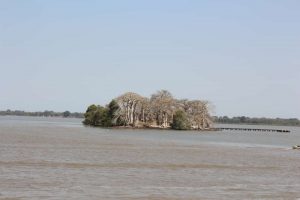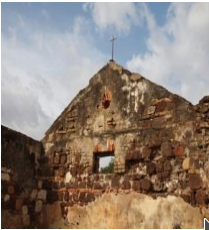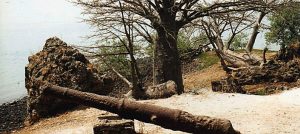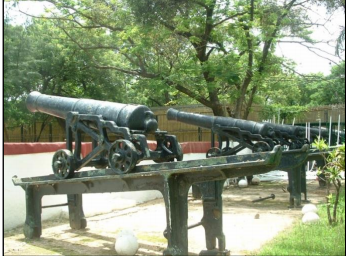Monuments and Sites
Nearly every village or district in the country is endowed with significant monuments and cultural sites. Those monuments and sites whose significance transcends their local boundaries go through a process specified in the NCAC Act to be declared national monument. Further, those sites with outstanding universal significance are nominated for inscription in the UNESCO World Heritage List.
UNESCO World Heritage Sites
At present The Gambia has two inscriptions in the UNESCO World Heritage List. These are: 1. Kunta Kinteh Island (formerly James Island) and Related Sites, which was inscribed in the World Heritage List in 2003. The site is a serial inscription of several sites that form a historical continuum which illustrate outstanding universal value.
Kunta kinteh Island and Related Sites was inscribed under criteria iii and vi of the criteria for inscription stipulated in the World Heritage and consists of the following sites:
- The ruins of the French and Portuguese settlements at Albreda and Juffureh which are located 1 km west of San Domingo (CFAO Building, Maurel Freres Building and Portuguese Church);
- The Mandingo village of Juffureh, which was popularized by Alex Haley’s ‘Roots’, and the riverside settlement of Albreda;
According to the World Heritage Committee’s citation, “these sites together present a testimony to the main periods and facets of the encounter between Africa and Europe along the River Gambia, a historical continuum stretching from pre-colonial and pre-slavery times to independence. The site is particularly significant for its relation to the beginning of the slave trade and its abolition and also documents early access to the interior of Africa”.
The Stone Circles of the Senegambia, the second Gambian world heritage site was listed in 2006 under criteria I and iii. This is also a serial inscription and consists of four sites, two of which are found in Senegal (Sine Ngayene and Wanar), and the other two in The Gambia (Wassu and Kerbatch). The four large groups of stone circles represent an extraordinary concentration of over 1,000 monuments in a band 100 km wide along some 350 km of the River Gambia. The four groups cover 93 stone circles and numerous tumuli and burial mounds, some of which have been excavated to reveal material that suggest dates between 3rd century BC and 16th century AD. Together the stone circles of laterite pillars and their associated burial mounds present a vast sacred landscape created over more than 1,500 years, and reflect a prosperous, highly organized and lasting society1.
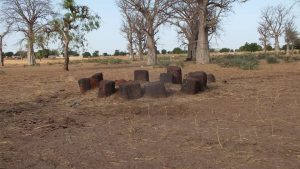
The Stone Circles at Kerbatch
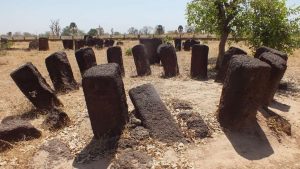
The Stone Circles at Wassu
With these inscriptions the most renowned Gambian cultural heritage sites are now inscribed in the world heritage list. Nevertheless there are other important sites in the country which can be considered for world heritage listing either independently or as extensions to the already inscribed sites.

